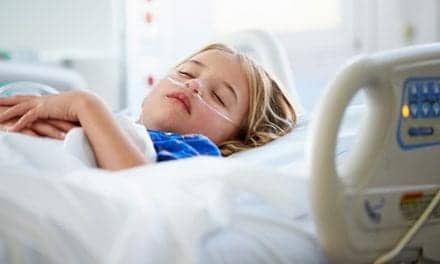Three experts discuss the latest technologies in spirometry

RT had the opportunity to discuss pediatric spirometry with William Cary, director of marketing, respiratory diagnostics, for VIASYS Healthcare Inc, Conshohocken, Pa; William Jones, president of Jones Medical Instrument Co, Oak Brook, Ill; and Susan Lukenbill, national sales manager, Futuremed America Inc, Granada Hills, Calif.
Since 1979, Futuremed has been a family owned and operated company focused on spirometers and other medical devices. Jones Medical is also a family owned and operated spirometer and health care device manufacturer founded in 1919. VIASYS was established in 2001 after the merger of several international medical device manufacturers. It offers spirometers under its Micro Medical, JAEGER, and SensorMedics brands.
RT: What are the trends/new developments in spirometers and their use, especially in relation to pediatrics?
William Cary: I think the only way even basic spirometry is going to be more widely applied is through education and training. In terms of the interpretive side of the data, we’re developing a service that will allow us to provide a family practitioner or diabetologist with [what is] essentially an overread capability. So we can have clinicians upload the data from the spirometry test; we can tell them if their technician got a good flow volume loop, if not, why not, and if maybe the technician needs to be retrained or focused more on the technique. We can provide that overread much like a radiologist provides interpretations for x-rays, MRI, and CT.
William Jones: I think the most recent trend has been the development of portable spirometers. They’re less intimidating for kids and more efficient because they can be brought to the patient versus bringing the patient down the hall to a stationary spirometer. Another recent trend is the incorporation of disposable sensor technology. It allows the user to essentially throw away the spirometer’s measuring system after each patient, which minimizes sterilization hassles.
Susan Lukenbill: Kids bore easily, and maybe they understand a spirometry test less than an adult would. So, what we have on our spirometers is what we call pediatric incentives. We have one called “Bubbles.” It’s a cartoon that shows a bubble in front of a small girl. The bubble is based on the child’s predictive value. It makes a fun game out of it, so when children blow into the spirometer, the goal is to fill it to the maximum predictive. It becomes a more interactive, it makes it a little more challenging for kids to participate and try, and it makes it more likely to get better results.
RT: Are there any revolutionary products (either the spirometers themselves or technologies and products used with them) hitting the marketplace that might benefit pediatrics in particular?
Cary: One of the areas we’re particularly proud of pioneering is impulse oscillometry spirometry (IOS). A number of studies have been done [with the IOS system] to show that it has actually a higher sensitivity than [does] regular spirometry. Essentially, it gives you the same results, but with tidal breathing. So children can put [their] mouths on a mouthpiece and just breathe normally. There are sound waves that are created, which go into the upper airway. The way that it’s measured gives us resistance and reactance at the upper airway, the middle airway, and the lower portion of the lungs. This has the promise of really being a significant advancement for pediatric institutions. … Right now it’s an accessory on a pulmonary function device that you can get on either our VMAX, or our JAEGER systems with the IOS accessory that fits onto the existing lab-based spirometry.
Jones: I can’t publicly disclose the technology in our pipeline at this time, but if all goes as planned, we hope to add another milestone product to the market in the near future.
Lukenbill: One of the options that we have on Discovery 2, our portable spirometer, is called airway resistance. For the very, very young patients or the very elderly, there’s a new way of measuring some values from the lung based on what’s called occlusion. … Basically, you use the same [spirometer] unit with a different sensor that has an automated moving valve inside it. With spirometry, the patient has to blow out into the spirometer with force. With airway resistance measurement, the patient just breathes normally, and periodically, the valves quickly close and open again. … It’s not as good as spirometry, but when you have a preschool-aged patient … that you’re suspecting might have asthma, and you want some sort of measurement other than just a guess, it’s a valuable test.
RT: Is the use of spirometers in pediatrics a growing market?
Cary: I think one of the things that we’re seeing in spirometry—or an opportunity for greater use of spirometry in primary practice—is the advent of these new inhaled biological products. The first one to receive US Food and Drug Administration approval and that is on the market is called Exubera, which is inhaled insulin. Patients who are being considered for Exubera have to have a spirometric test done. They have to have their pulmonary function determined. They have to get a baseline; and it can’t be below 20% predicted, or they’re not a candidate.
To the extent that younger patients may be candidates for that type of therapy for their diabetes would result in applications [of spirometry] that heretofore wouldn’t have been imagined. So, we’re creating another market opportunity for spirometry. The fact that we’re targeting endocrinologists and diabetologists and educating them about how to do proper spirometry and how to interpret the results of that spirometry will no doubt have a halo effect in terms of their comfort level in applying it to other patient populations within their practice.
Jones: Clearly, [the market is growing], but not at the rate it should be. Spirometry is the only way to accurately diagnose and manage pediatric asthma; this is stipulated in the NIH guidelines. Eighty percent of asthmatics are treated in the primary care setting, yet less than 30% of those primary care physicians (PCPs) provide spirometry testing. There is a huge disconnect there that stems from the limited focus on spirometry/respiratory disease in residency training. It has been difficult to make an impact in this area, and to my knowledge Jones Medical is the only spirometry company to make inroads here. Currently, our spirometers are utilized in nearly all ACOFP [American College of Osteopathic Family Physicians] residency training programs.
Lukenbill: There’s still so much potential for regular use of spirometers. For years, Dr [Thomas] Petty has led a push to get primary care and family practitioners to do spirometry testing, but still, I would guess that most don’t own a spirometer. There are still so many kids who could use this. Usually, if kids have a problem, they’ll get referred to an allergy specialist or a pulmonologist, but a lot of times you don’t know that a person has a problem until you test them. … So, it’s been a big push for several years to get regular family practitioners and internists to check spirometry for everybody. Then, even if [the patients] are normal, the physician will know what their normal values are, and over time, if the [patients] start having problems, physicians will know it and can detect it.
RT: What is the future of spirometry? Will it continue to be an integral part of the pediatric diagnosis/treatment process as technology, in general, grows?
Cary: I think the potential [for pediatric spirometry] is with the technology, for further miniaturization and greater applications of telemedicine so children can have these devices at home. They can blow into a spirometer, and that data can be uploaded to their physician, who can look at the information and make informed decisions. So, I think [the future of spirometry] is enhanced technology with telemedicine built into it. [It’s] the ability to track the progression and the trends of their condition and then make informed decisions without having to bring patients into the clinic or make interventions before they deteriorate to the point of being hospitalized.
Jones: The future for spirometry is bright, and it will definitely be an integral part of asthma diagnosis and management well into the future. I think RTs have the potential to make a significant impact here by sharing their expertise in spirometry with their local PCPs. The more PCPs who offer spirometry, the more asthma and COPD patients who will be identified, and consequently, the more patients who will then be referred to those RTs. It’s a win, win, win.
We have it easy. Spirometry is now recognized as an extremely beneficial and established diagnostic test, is recommended by the guidelines, and provides excellent reimbursement. If you’re an established spirometry company with a good product, it should be a slam-dunk. In the early days of spirometry, my father had to first explain to physicians what spirometry was, how it worked, and why they needed it; not until that was clear could he begin to discuss product features.
Lukenbill: As computers are progressing, spirometers are going to be able to move along with them. When I first started selling spirometers, they weighed 6 or 7 pounds, there was no battery power, and they had to be plugged into the electricity. Also, there was very little memory, and there was very little in the way of software integration with other programs. Now spirometers are pretty small. You can pick them up and carry them anywhere, and they store hundreds of tests. You can hook them up to a computer, and you can transfer the results to EMRs (electronic medical records). So, the future of spirometers is probably going to advance as computer technology advances, which will make spirometers more user-friendly, more software-friendly, and more integrated with other equipment.
Tor Valenza is a staff writer for RT. For more information, contact [email protected].









